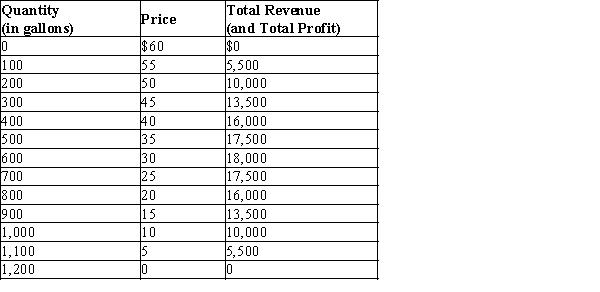Table 17-1
Imagine a small town in which only two residents, Rochelle and Alec, own wells that produce safe drinking water. Each week Rochelle and Alec work together to decide how many gallons of water to pump. They bring the water to town and sell it at whatever price the market will bear. To keep things simple, suppose that Rochelle and Alec can pump as much water as they want without cost so that the marginal cost of water equals zero. The town's weekly demand schedule and total revenue schedule for water is shown in the table below: 
-Refer to Table 17-1. If Rochelle and Alec operate as a profit-maximizing monopoly in the market for water, what price will they charge?
Definitions:
Total Cost
The total of all costs associated with producing goods or services, encompassing both fixed and variable expenses.
Output
The amount of goods or services produced by a company, industry, or economy within a specific period.
Marginal Cost Curve
A graphical representation showing how the cost of producing one more unit of a good varies with the quantity of the good produced.
Average Total Cost (ATC)
The total cost of production divided by the quantity of output produced, representing the per-unit production cost.
Q113: In pursing its own interest, an oligopoly
Q163: Refer to Table 17-23. At the Nash
Q242: Refer to Table 17-3. Suppose the town
Q273: In markets characterized by oligopoly,<br>A)the oligopolists earn
Q368: Monopolistically competitive firms could reduce the average
Q386: Refer to Table 18-11. What is the
Q391: Policymakers should be aggressive in using their
Q405: As the number of firms in an
Q498: Consider a market served by a monopolist,
Q576: Which of the following conditions is characteristic